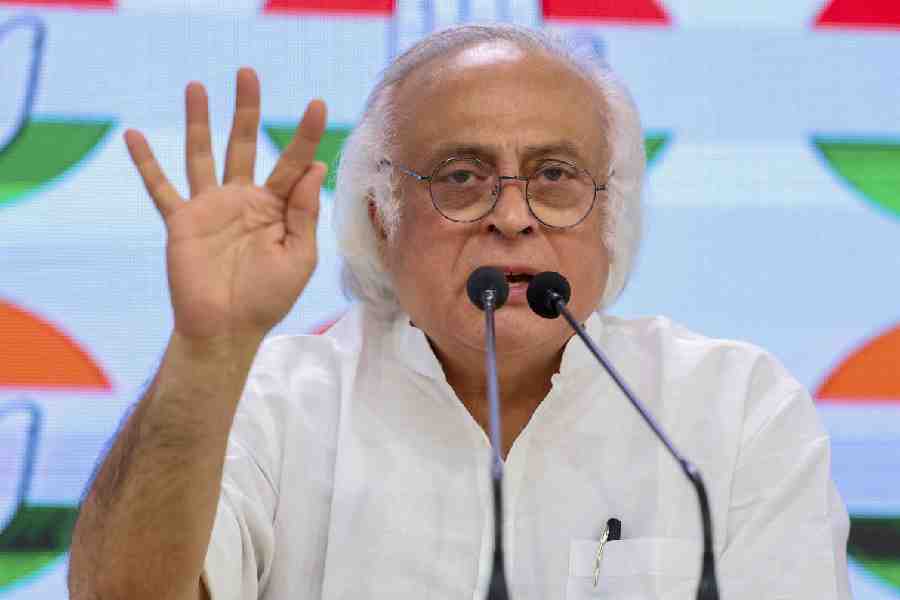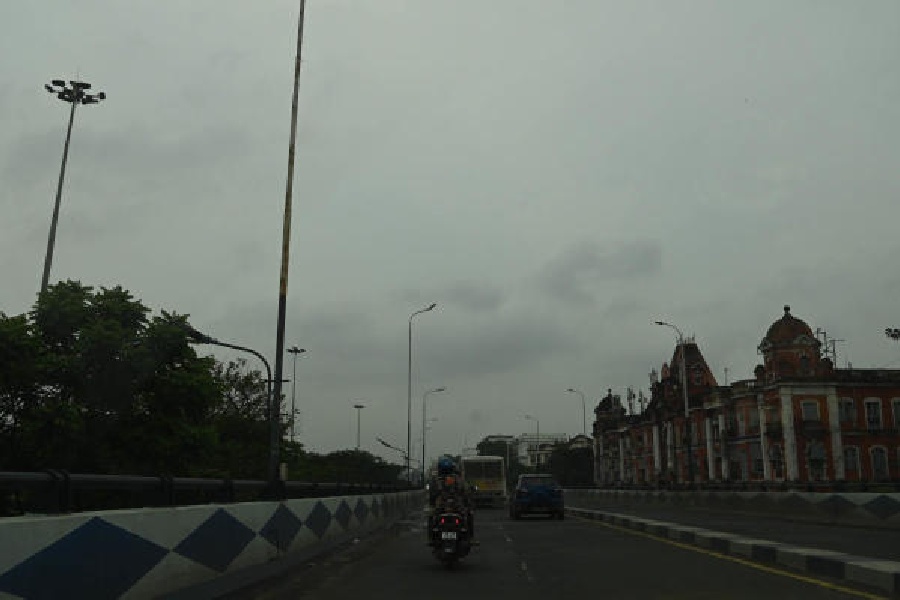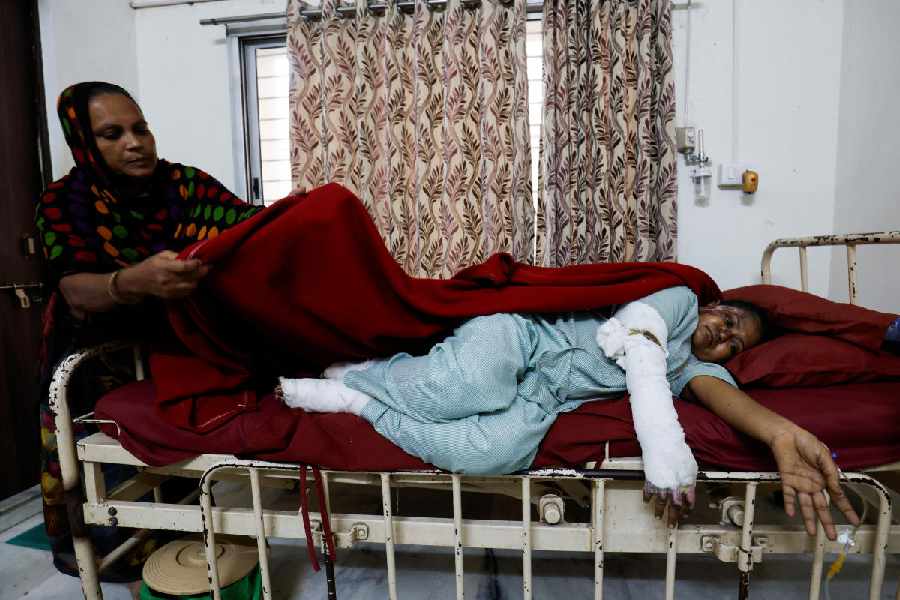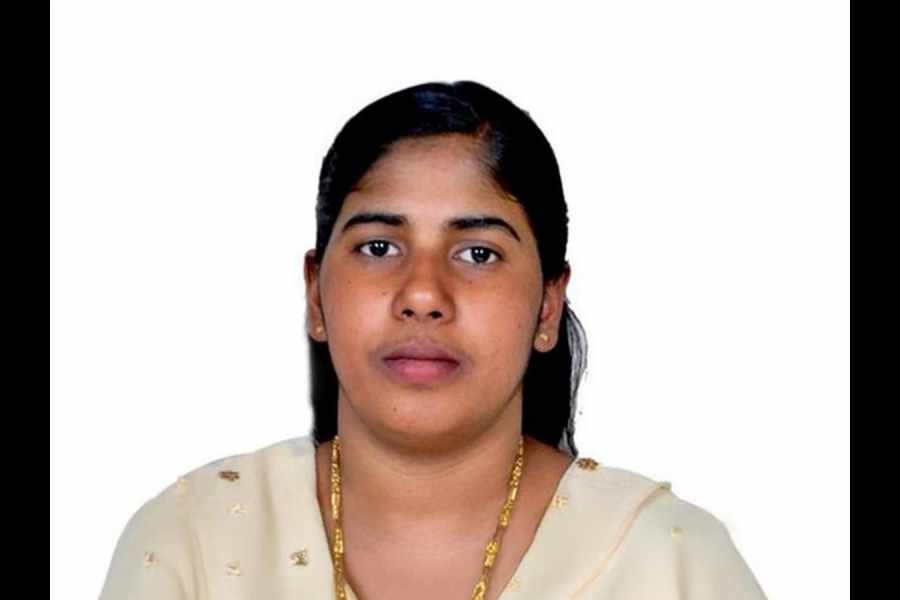 |
| A ritual being performed on a mini chariot in Puri on Thursday. Picture by Ashwinee Pati |
On rath yatra, there is something or the other for everyone. While the multitude of devotees pull the gigantic chariots of the divine trinity along the Grand Road, children of this holy town pride themselves in tugging their own “mini” raths.
The age-old tradition of miniature raths, tugged in the several lanes and by-lanes of Puri, represent a sacred bond between Gen-Y and the lords. These colourful structures are replicas of the main raths not only in terms of architecture and design but are also built by the same carpenters, tailors and artists, who toil for the chariots of Lord Jagannath and his siblings, Balabhadra and Subhadra.
On the day of the chariot festival, children take over, pulling their baby raths to the accompaniment of traditional musical instruments. “This is our family tradition and I tugged the baby rath for the first time when I was just three,” said Ritwik, a Class IX student at a Puri school.
Arabinda Das, a scientist-based in Charleston in South Carolina and a native of Daitapada Sahi, feels the miniature raths are always the centre of attraction for youngsters as they view it as their own form of celebration on rath yatra day.
“For me, the baby raths bring back childhood memories. When I was in school, I eagerly looked forward to the rath yatra so that we could flaunt our own chariots in our neighbourhood. The smaller temples in the lanes used to be the congregation point for all the children and we used to take part in the rituals there. Though many temples in the lanes are owned by particular families, everyone joins hands to ensure that the baby rath yatra is conduced with a lot of fanfare,” he said.
One of these famed baby raths is tugged every year in Bali Sahi. A 15-feet-high rath, fitted with 14 wheels, has been rolling on the lanes of Bali Sahi for over three centuries.
Rajat Pratihari, owner of a house temple which conducts the special chariot, said the detailing on the baby raths, including the horses and sarathis (captains), were made smaller according to proportions.
“Though we are a little bit burdened with an annual investment of around Rs 70,000 for the baby raths, we are managing the cost of the timber from our own patch of forest on the outskirts of Puri,” said Pratihari.
Local residents remember that the miniature chariot festival is being celebrated since the days of the erstwhile ruler of Puri, Ramachandra Deb. Once Deb got upset and sent his men to seize the rath. They came and took the mini rath to the royal palace, but later the king was convinced and allowed the rath to roll again with some restrictions on the size and number of wheels.
The main carpenter of the miniature rath of Bali Sahi, Baishnab Maharana, also builds rath for the deities of the Jagannath temple. He said he attached the same amount of importance to the main chariot of the Puri temple and the miniature chariots.
Basudev Mohapatra, one of the tailors for the trinity’s chariots, also works on these mini replicas. “I work for both the chariots. For me all are equal. Moreover, as little kids and people of various localities are also involved with the special festival, the work becomes more interesting,” he said.
The miniature rath of Bali Sahi starts from Pratihari house, which has a mini temple inside their compound, and reaches the Grand Road and then goes to the final destination, the Gundicha temple, which is situated at Dasavatar Math, near the Mausimaa temple.
Apart from Bali Sahi’s miniature rath, a similar baby rath yatra also originates from Bada Sankha Nua Sahi and culminates at Gundicha temple.










